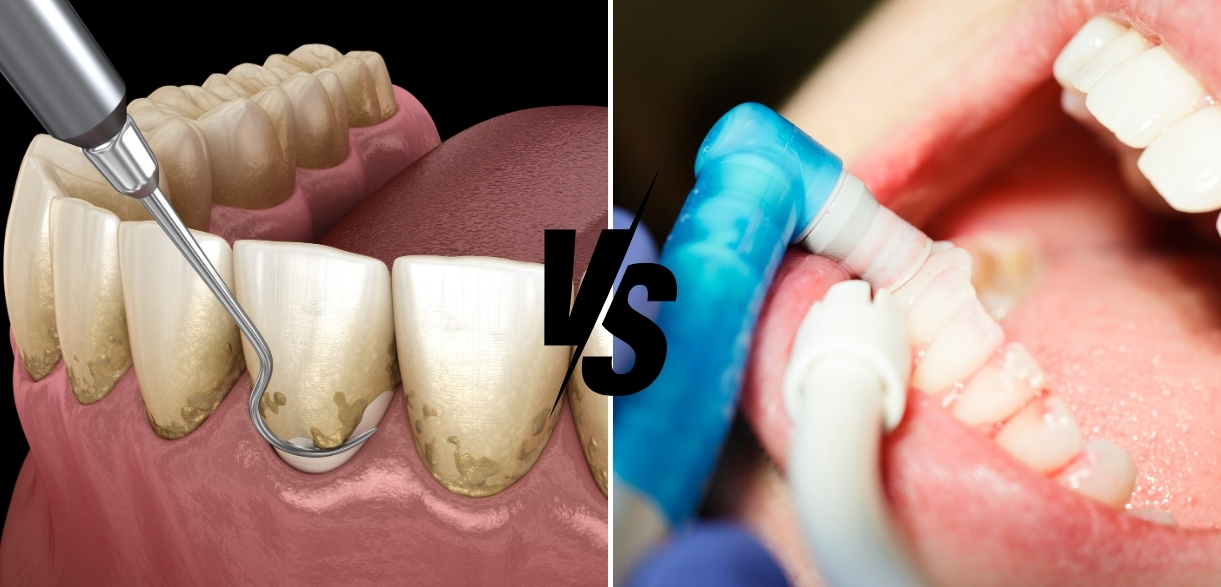
Maintaining good oral health goes beyond brushing and flossing every day. Regular dental visits are essential for preventing gum disease, tooth decay, and other oral health problems. However, when it comes to cleaning your teeth, you might wonder about the difference between a routine cleaning and a more intensive procedure, such as scaling and root planing. Both approaches focus on removing plaque and tartar, but they vary significantly in their purpose, procedure, and benefits. By understanding the key differences in scaling and root planing vs. regular cleanings, you can make informed decisions about the best dental care for your needs.
What Is Regular Dental Cleaning?
Regular dental cleanings, or prophylaxis, are a standard part of preventive dental care. These cleanings are typically performed every six months during routine dental checkups. The goal is to remove plaque, tartar, and surface stains from your teeth, ensuring your smile stays healthy and bright.
During a regular cleaning, a hygienist uses handheld instruments to scrape away plaque and tartar buildup above the gum line. This process helps prevent the formation of cavities and gum disease. It’s a noninvasive procedure ideal for patients with healthy gums and teeth.
What Is Scaling and Root Planing?
Scaling and root planing is a more intensive treatment, often called deep cleaning. It is recommended for patients with gum disease, especially those who have developed periodontal (gum) issues. Unlike regular cleanings, scaling and root planing involve cleaning below the gum line to remove plaque and tartar from the tooth roots and smooth out rough spots on the tooth surfaces.
Scaling and root planing are done in two stages. Scaling involves scraping off plaque and tartar from below the gum line, while root planing smooths out the tooth roots to help the gums reattach to the teeth. This procedure is typically done under local anesthesia to ensure comfort, as it can be a bit more invasive than a standard cleaning.
Scaling and Root Planing vs. Regular Cleanings
The main difference between scaling and root planing and regular cleaning is the depth of the cleaning. Regular cleanings focus on cleaning the surface of the teeth and above the gum line, while scaling and root planing targets deeper into the gums, removing tartar and bacteria that can cause infections.
- Procedure Depth: Regular cleanings focus on removing plaque from the tooth surfaces while scaling and root planing go deeper into the gums and tooth roots.
- Purpose: Regular cleanings are preventive; scaling and root planing are therapeutic, addressing existing gum disease or infections.
- Treatment Duration: Regular cleanings typically take 30 to 60 minutes. Scaling and root planing may require multiple visits, especially if the gum disease is extensive.
Why Might You Need Scaling and Root Planing?
Scaling and root planing might be necessary if you notice symptoms such as swollen gums, persistent bad breath, bleeding gums while brushing, or loose teeth. These signs are often associated with gum disease, and the treatment can help prevent further damage to the gums and teeth. Sometimes, if gum disease is left untreated, it may lead to tooth loss.
Scaling and root planing not only help treat active gum disease but also prevent the progression of periodontal issues. The treatment removes harmful bacteria that cause infections, promoting healing and reattachment of the gums to the teeth.
How Is Scaling and Root Planing Performed?
Scaling and root planing involve several steps:
- Local Anesthesia: A local anesthetic is applied to numb the treated area to reduce discomfort during the procedure.
- Scaling: The dental professional uses specialized tools to remove plaque and tartar from beneath the gum line. This process may take longer than a regular cleaning, requiring more attention to detail.
- Root Planing: After the scaling process, the roots of the teeth are smoothed to eliminate rough surfaces where bacteria could thrive.
- Post-Treatment Care: After scaling and root planing, you may be given antibiotics or antimicrobial treatments to help prevent further infections.
Healing After Scaling and Root Planing
The healing time for scaling and root planing varies depending on the severity of the gum disease. Most patients’ gums will begin to heal within a few days, although there may be some discomfort, swelling, or sensitivity for up to a week. Following your dentist’s post-care instructions is essential to ensure the best results.
For patients who’ve experienced significant gum damage, scaling, and root planing may need to be followed up with additional treatments, such as gum surgery or more frequent dental visits, to ensure the gums fully heal.
Benefits of Scaling and Root Planing
Scaling and root planing offer several benefits for individuals with gum disease or those at risk of developing it:
- Prevention of Tooth Loss: Scaling and root planing can help prevent tooth loss caused by damaged gums and bone by treating gum disease early.
- Improved Gum Health: This treatment promotes healthier gums, helping them reattach to the teeth and preventing further infection.
- Reduction in Bad Breath: Scaling and root planing can reduce the causes of persistent bad breath by removing bacteria from under the gums.
Choosing between regular cleaning and scaling, and root planing depends on the health of your gums. Regular cleanings are sufficient for those with healthy teeth and gums, but if you have gum disease, scaling, and root planing may be necessary to prevent further damage.
Regular dental checkups are essential to determining which treatment is right for you. If you have symptoms of gum disease, don’t wait—consult your dentist to discuss the best course of action for your oral health.

